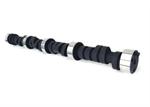Hello all;
Finally got some paperwork from the lady I bought my car from a year ago.
In the stack of stuff was a rebuild sheet from S&K Engine Specialists of Topeka KS (anyone heard of these people?)
It shows that in 1989 my Original LS-5 was rebuilt by a Don Crockett and that he used the following cam. 30005.
Can anyone comment regarding how this cam differs from the OEM ???
Particular interested if this can does not make a good idle because my engine idles rough and I've not been able to fix this.
Thanks
Finally got some paperwork from the lady I bought my car from a year ago.
In the stack of stuff was a rebuild sheet from S&K Engine Specialists of Topeka KS (anyone heard of these people?)
It shows that in 1989 my Original LS-5 was rebuilt by a Don Crockett and that he used the following cam. 30005.
Can anyone comment regarding how this cam differs from the OEM ???
Particular interested if this can does not make a good idle because my engine idles rough and I've not been able to fix this.
Thanks

Comment